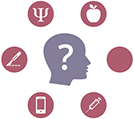
Ebm@school – a curriculum of critical health literacy for secondary school students
A curriculum based on the concept of evidence-based medicine, which consists of six modules.
| 0 Comments | Evaluated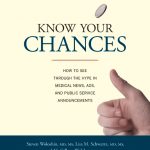
Know Your Chances
This book has been shown in two randomized trials to improve peoples' understanding of risk in the context of health care choices.
| 0 Comments | Evaluated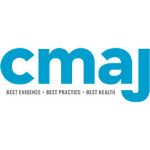
Tips for learners of evidence-based medicine: 1. relative risk reduction, absolute risk reductions and number needed to treat
Relative risk reduction, absolute risk reduction and number needed to treat.
| 0 Comments
Tips for teachers of evidence-based medicine: Relative risk reduction, absolute risk reduction and numbers needed to treat
Tips for teachers of evidence-based medicine: 1. Relative risk reduction, absolute risk reduction and number needed to treat.
| 0 Comments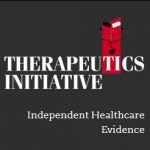
Evidence Based Drug Therapy: What Do the Numbers Mean?
Strengths and limitations of different measures of the effects of treatments.
| 0 Comments
Therapy
A University of Massachusetts Medical School text discussing the strengths and limitations of different measures of the effects of treatment
| 0 Comments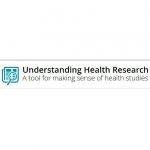
Understanding Health Research, a tool for making sense of health studies: use of statistics
In health research, researchers typically use statistics to determine statistical significance and effect size.
| 0 Comments
Reading the Medical literature
American College of Obstetricians and Gynaecologists (ACOG) introduction to critical appraisal and evidence-based medicine.
| 0 Comments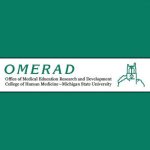
Evaluating relevance
How to evaluate relevance of research in Michigan State University’s Evidence-Based Medicine Course.
| 0 Comments
What are the results?
A Duke Univ. tutorial explaining how to address the questions: How large was the treatment effect? What was the absolute risk reduction?
| 0 Comments
Delfini: Critical appraisal matters
A 20-minute slide cast discussing how reliable evidence and critical appraisal can help to improve health outcomes.
| 0 Comments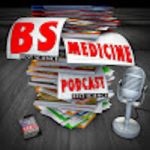
Evidence-Based and Shared-Informed Decision-Making According to Homer (Simpson)
With help from Homer Simpson, James McCormack uses a 17-minute slide cast to explain the principles of thoughtful treatment.
| 0 Comments
Fast Stats to explain absolute risk, relative risk and Number Needed to Treat (NNT).
A 15-slide presentation on ‘Fast Stats’ to explain absolute risk, relative risk and Number Needed to Treat (NNT) prepared by PharmedOut.
| 0 Comments
Unsubstantiated and overstated claims of efficacy
A 32-slide presentation on misleading advertisements and FDA warnings prepared by PharmedOut.
| 0 Comments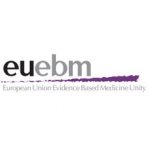
2×2 tables and relative risk
A 10-min talk on ‘2x2 tables and Relative Risk’, illustrated by 14 slides, with notes.
| 0 Comments
Applying the evidence
Six key slides produced by the University of Western Australia on applying evidence in practice.
| 0 Comments
Detectives in the classroom
Five modules of materials for promoting epidemiology among high school students.
| 0 Comments
Applying the results of trials and systematic reviews to individual patients
Paul Glasziou uses 28 slides to address ‘Applying the results of trials and systematic reviews to individual patients’.
| 0 Comments
Critical appraisal of clinical trials
Slides developed by Amanda Burls for an interactive presentation covering the most important features of well controlled trials.
| 0 Comments
No Power, No Evidence!
This blog explains that studies need sufficient statistical power to detect a difference between groups being compared.
| 0 Comments
Sample Size matters even more than you think
This blog explains why adequate sample sizes are important, and discusses research showing that sample size may affect effect size.
| 0 Comments
Making sense of randomized trials
A description of how clinical trials are constructed and analysed to ensure they provide fair comparisons of treatments.
| 0 Comments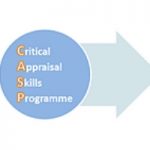
Making sense of results – CASP
This module introduces the key concepts required to make sense of statistical information presented in research papers.
| 0 Comments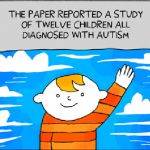
MMR: the facts in the case of Dr Andrew Wakefield
This 15-page cartoon explains the events surrounding the MMR controversy, and provides links to the relevant evidence.
| 5 Comments
Interpreting 95% Confidence Intervals
Gilbert Welch’s 9-min video on how 95% confidence intervals relate to p values.
| 0 Comments
Desert Island Medical Journal
Small studies with few outcome events are usually not informative and can be misleading.
| 0 Comments
Space-Diving Safety
Small studies with few outcome events are usually not informative and can be misleading.
| 0 Comments

Overview of study designs
11 slides and a 4-min commentary overviewing study designs for clinical research. (from Univ Mass Med School).
| 1 Comment
P-values and the role of chance
Gilbert Welch’s 10-min video on p-values and assessing the likelihood that a difference between treatments is due to chance.
| 0 Comments
Science fact or fiction? Making sense of cancer stories
A Cancer Research UK blog, explaining how to assess the quality of health claims about cancer.
| 0 Comments
Randomised Controlled Trials vs. Observational Studies
5-minute video explaining the difference between randomised trials and observational studies.
| 0 Comments
How to read articles about healthcare
This article 'How to read health news behind the headlines', by Dr Alicia White, explains how to assess health claims in the media.
| 0 Comments
In defence of systematic reviews of small trials
An article discussing the strengths and weaknesses of systematic reviews of small trials.
| 0 Comments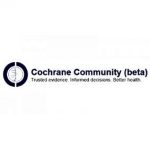
Mega-trials
In this 5 min audio resource, Neeraj Bhala discusses systematic reviews and the impact of mega-trials.
| 0 Comments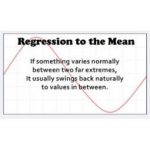
A poem about regression to the mean
Regression to the mean can lead us to think that an intervention has been effective when it hasn't. This poem illustrates it nicely.
| 0 Comments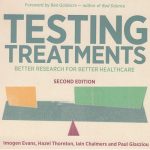
ใครเป็นผู้ตัดสินใจว่าจะศึกษาอะไร
เห็นชัดว่าสถานการณ์ดังกล่าวไม่เข้าที แต่เหตุใดจึงเป็นเช่นนี้ เหตุผลหนึ่งคือประเด็นวิจัยมักถูกบิดเบือนโดยปัจจัยภายนอก [22] เช่น อุตสาหกรรมยาทำการวิจัยเพื่อสนองเป้าหมายหลัก คือเพื่อให้ลุล่วงตามภาระหน้าที่ในการทำกำไรที่มีต่อผู้ถือหุ้น ส่วนความรับผิดชอบที่มีต่อผู้ป่วยและแพทย์สำคัญรองลงมา ธุรกิจถูกชักจูงด้วยตลาดขนาดใหญ่ เช่น หญิงที่สงสัยว่าควรใช้วิธีการรักษาด้วยฮอร์โมนทดแทนหรือไม่ หรือผู้ป่วยที่ซึมเศร้า วิตก กังวล หดหู่ หรือเจ็บปวด ทว่าในช่วงทศวรรษหลังๆ แนวทางแบบเล็งผลทางการค้านี้แทบไม่ได้ทำให้เกิดวิธีการรักษาใหม่ที่สำคัญ แม้แต่ในโรค “ยอดนิยม” […]
| 2 Comments
ความดันโลหิตสูงขณะตั้งครรภ์ระยะก่อนชัก (Pre-eclampsia)
อีกตัวอย่างที่เด่นชัดของงานวิจัยที่ดีเป็นเรื่องหญิงมีครรภ์ ในแต่ละปี หญิงมีครรภ์ราว 600,000 รายทั่วโลกเสียชีวิตเนื่องจากอาการแทรกซ้อนจากการตั้งครรภ์ โดยส่วนใหญ่เกิดในประเทศกำลังพัฒนา การเสียชีวิตในหลายกรณีสัมพันธ์กับการชักระหว่างตั้งครรภ์ ซึ่งเป็นภาวะที่เรียกว่าความดันโลหิตสูงระหว่างตั้งครรภ์ซึ่งมีอาการชักร่วมด้วย ภาวะนี้ร้ายแรงจนอาจคร่าชีวิตทั้งแม่และลูก หญิงที่มีภาวะเสี่ยง คือภาวะความดันโลหิตสูงขณะตั้งครรภ์ระยะก่อนชัก (เรียกอีกชื่อว่า ครรภ์เป็นพิษ) จะมีความดันโลหิตสูง และพบโปรตีนในปัสสาวะ ในปี ค.ศ. 1995 งานวิจัยพิสูจน์ว่าการฉีดแมกนีเซียมซัลเฟต ซึ่งเป็นยาพื้นๆ […]
| 2 Comments
บทที่ 7 คำนึงถึงผลจากความบังเอิญ
ประเด็นสำคัญ ต้องมีการพิจารณา โดยประเมินว่าเชื่อมั่นคุณภาพและจำนวนของหลักฐานที่มีได้เพียงใด ความบังเอิญและกฎว่าด้วยจำนวนมาก การป้องกัน (และการแก้ไขความลำเอียงที่ไม่ได้ป้องกันไว้) ทำให้เกี่ยวกับผลเชื่อถือได้ หากการตรวจสอบอย่างเที่ยงธรรมขาดองค์ประกอบเหล่านี้ ต่อให้ปรับผลจากการวิจัยอย่างไรก็ไม่อาจแก้ปัญหารวมถึงผลกระทบจากปัญหาที่อาจคร่าชีวิตได้ (ดูบทที่ 1 และ 2) และแม้เมื่อลดความลำเอียงได้ด้วยขั้นตอนต่างๆ แล้ว เราก็ยังอาจถูกความบังเอิญหลอกเอาได้ ทุกคนรู้ว่าถ้าโยนเหรียญซ้ำๆ จะออกหัวหรือก้อย “ติดกัน” 5 […]
| 1 CommentNo Resources Found
Try clearing your filters or selecting different ones.
